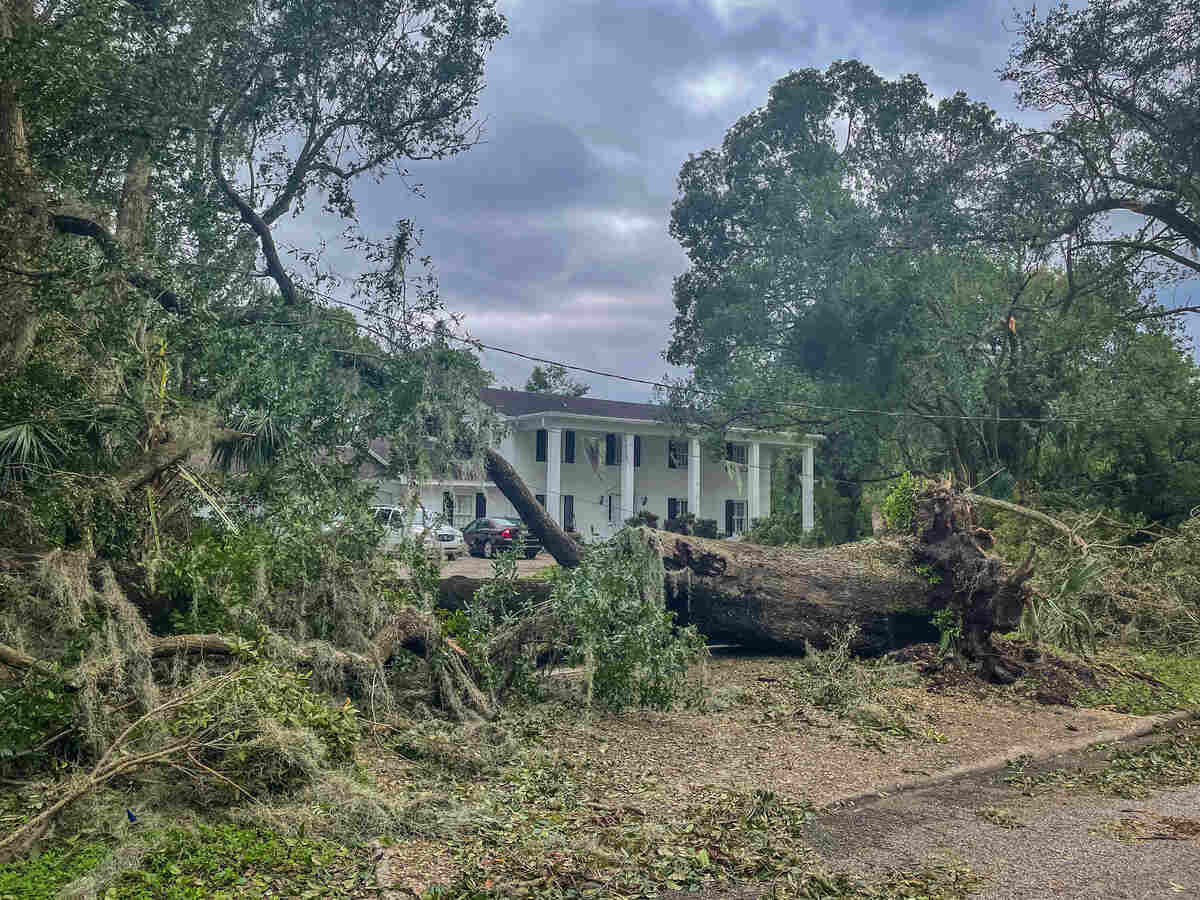
Ocala is one of Florida’s top 10 hurricane-safe cities, but the effects are still felt here. Certain landscaping designs can help protect your home from the effects of flooding and hurricane-force winds. Consider these 11 hurricane-resistant landscaping ideas if you live in Ocala to reduce the damage to your property during a storm.
Here are 11 ways to reduce hurricane damage in Ocala:
- 1. Improve Drainage
- 2. Keep Drain Paths Clear
- 3. Check Your Trees
- 4. Opt for Wind-Resistant Trees
- 5. Plan Your Tree Placement
- 6. Keep Shrubs and Trees Healthy
- 7. Choose Hurricane-Resistant Fencing
- 8. Install a Retaining Wall
- 9. Choose Native Plants
- 10. Use Soft Mulches
- 11. Secure Your Hardscapes
- Be Prepared for Tropical Storms and Hurricanes
- FAQ About Hurricane-Resistant Landscaping
1. Improve Drainage
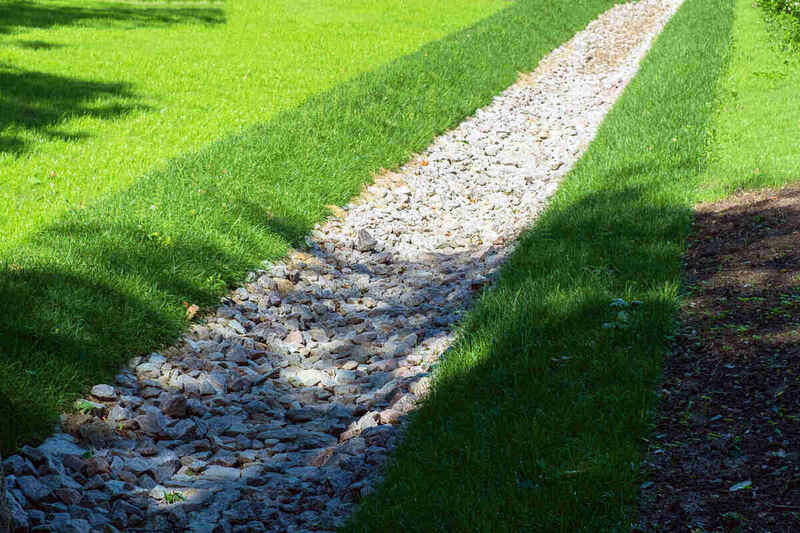
Ocala residents frequently have flooding and drainage issues, particularly after intense rainstorms. Low places in your yard can collect water and drain slowly, or erosion may have altered the grade of your landscape, causing your yard to retain more water.
There are several ways to improve drainage in your yard.
- Install a French drain or swale to direct rainwater.
- Add a dry creek bed or rain garden to the landscape.
- Grade your yard to remove low spots and improve the slope.
- Aerate areas with compacted soils.
- Maintain gutters and downspouts. Keep them clean and in good shape.
- Install a rain barrel to collect the excess.
Cost to improve drainage: You can improve your Ocala property’s drainage for $225 bucks or less by aerating your yard. You can install a French drain for $10 to $100 per linear foot.
2. Keep Drain Paths Clear

Consider the nearby storm drains while designing your hurricane-resistant yard. If you install a fence or plants that prevent water from flowing to the storm drain, your yard may flood. Also, examine your downspouts, clean your gutters, and cut back any vegetation restricting water flow.
Check your storm drain for debris and collect any stones, leaves, or other trash that might clog the drain and cause water to back up into your yard.
Cost of yard cleanup: Professional yard cleanups cost between $170 and $375, or $280 on average.
3. Check Your Trees
Zombies exist, and they might be in your Ocala yard right now! Zombie trees, that is. Trees that have been damaged by hurricanes, cold snaps, periods of drought, or pests and are slowly dying from the inside out are considered zombie trees.
Eliminating hazardous trees from your yard is crucial in designing a landscape that can withstand storms. You don’t want an old, decaying tree near your home. Contact a certified, insured arborist to give your trees a checkup. They will give you advice on any trees that could be hazardous as well as the best strategy to remove them.
Cost to remove trees: The tree removal cost will vary based on the location and size of the tree, but you should budget between $150 for a very small tree removal and $1,935 for really large or complicated projects.
4. Opt for Wind-Resistant Trees
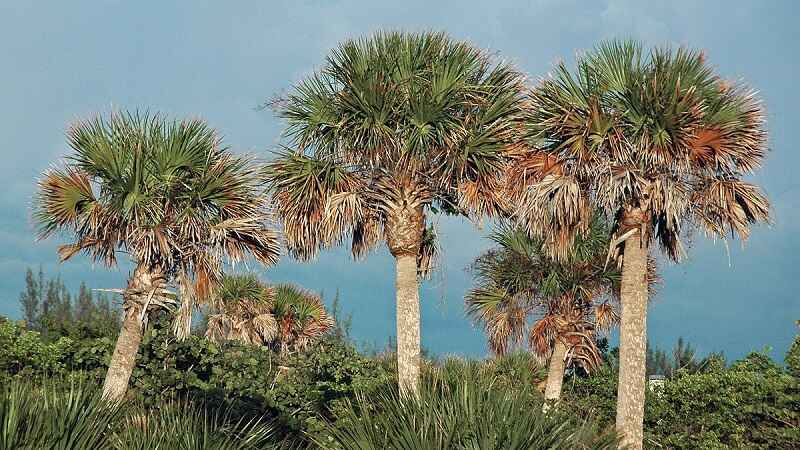
Photo Credit: James St. John / Wikimedia Commons / CC BY 2.0
A tree falling through your roof during a hurricane or tropical storm is terrifying.. Fortunately, certain tree species are less prone to topple, crack in half, or lose limbs due to the high winds we get in Florida.
Strong trunks and branches plus a deep root system that holds them to the ground are characteristics of wind-resistant trees. Think about replacing weak, dead, or damaged trees in your landscaping with one of the wind-resistant varieties recommended by the University of Florida’s Institute of Food and Agricultural Sciences (UF/IFAS).
- Sand live oak (Quercus geminata)
- Bald cypress (Taxodium distichum)
- Crapemyrtle (Lagerstroemia indica)
- Sabal palm (Sabal palmetto)
- Southern magnolia (Magnolia grandiflora)
Cost of planting a tree: A landscaping service generally charges homeowners between $150 to $1,850 to plant a tree, depending on the tree’s variety, size, condition, and placement.
5. Plan Your Tree Placement
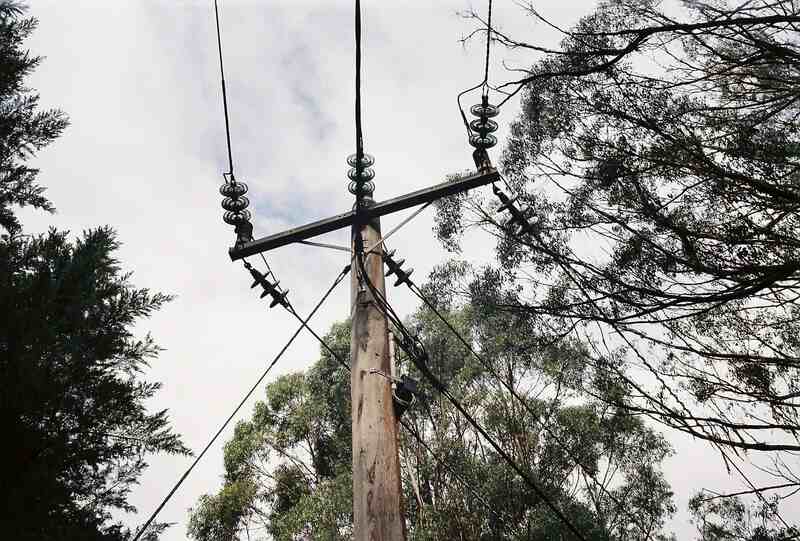
A hurricane-resistant landscaping includes not just the type of trees in your yard but also where you put them. Trees can either put you in danger or provide shelter during a storm, depending on where they are planted.
Following these planting guidelines before you begin will help to safeguard your Ocala property. A new tree should protect your home from the next big storm, not damage it.
- Call 811: Before digging, call 811 to locate the utility lines. They will come out and mark it for free so you don’t plant a tree directly over a water or power line.
- Avoid power lines: Planting trees near electricity lines is not a good idea. Large trees should be planted at least 12 feet from utility lines. In these areas, consider shrubs or ornamental grasses instead.
- Keep tree size in mind: As a tree reaches its maximum size, there should be at least five feet of open space between the tree and any structures. A mature tree that is 20 feet wide should be planted 15 feet away from foundations.
Pro Tip: When you plant multiple trees, a landscaping company will frequently give you a discount.
6. Keep Shrubs and Trees Healthy
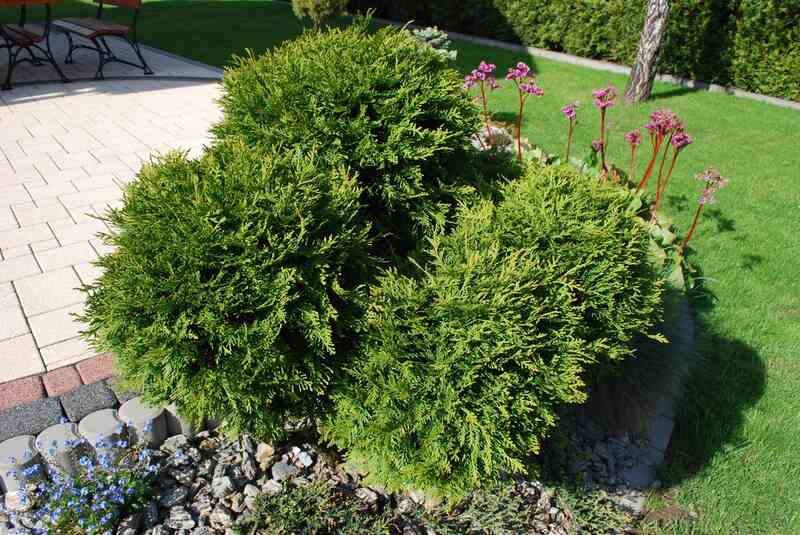
When you’ve spent the time and money to make your Ocala landscape as hurricane-resistant as possible, it’s critical to maintain it. Prune branches before hurricane season begins. You can rent a dumpster to haul off the debris if you have a lot of branches to remove.
You should also make an effort to keep your shrubs and trees disease-free, as diseases can weaken them and make them more susceptible to storm damage. Use this checklist to safeguard your plants from illnesses and insects.
- Good drainage: Ensure the soil around your plants drains well, so they don’t sit in standing water.
- Inspect regularly: Inspect plants and promptly remove unhealthy twigs and branches.
- Take precautions: Prevent fungus and insects with preventative treatments and an Integrated Pest Management (IPM) approach.
Cost of pruning: Prices for tree trimming range from $315 to $700 nationwide. If you have the pruning tools, you can trim your trees and bushes for free. Contact an Ocala tree service if you don’t have the time or tools to do it yourself.
7. Choose Hurricane-Resistant Fencing
The theory that strong privacy fences can withstand hurricanes due to their ability to block wind is wrong. Its wind resistance will ultimately cause the fence to collapse. Fences frequently suffer wind damage and are knocked over during hurricanes, requiring costly fence repairs.
Solid fence panels can break apart and be lifted by high winds. These could destroy your windows or car as they fly around. Slatted fences allow air to pass through and are less likely to collapse in severe weather. Here are your best Ocala fencing options:
Install
- Metal or stone: These materials are long-lasting and will not deteriorate like wood. Metal and stone fences will survive better in the presence of flying debris since they are more weather- and wind-resistant than wood fences.
- Slatted or chain-link: While less private than solid fences, chain-link and slat fences are more hurricane-resistant since strong gusts can pass through them. For more privacy, add a cloth screen to your chain-link fence.
Avoid
- Wood: Compared to metal fences, wooden fences are less durable and are more likely to deteriorate.
- Solid (like vinyl): Solid fences may appear strong, but since there are no gaps for the wind to travel through, they are more prone to being blown over. Although they are wonderful for seclusion, they are not ideal for our extreme weather.
Cost to install a fence: Aluminum or iron fences cost between $27 and $56 per linear foot. Chain-link fences are less expensive, ranging from $12 to $33 per linear foot.
8. Install a Retaining Wall
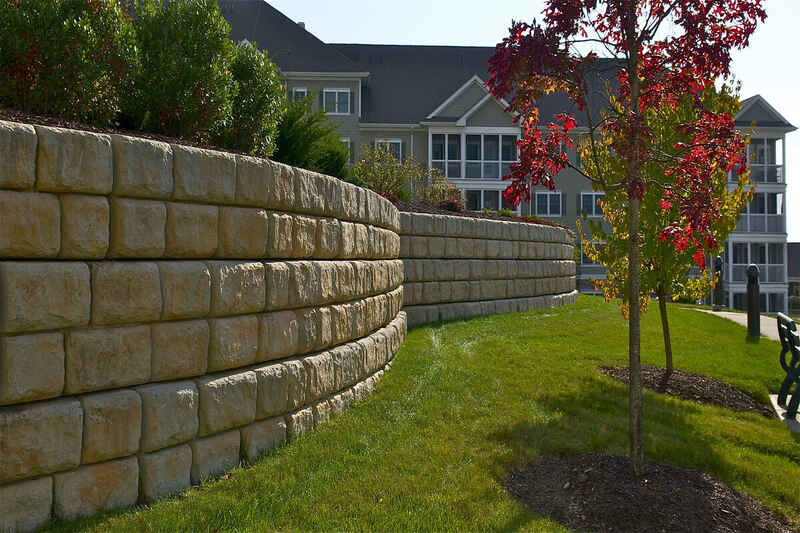
A small barrier called a retaining wall stops soil erosion, raises the landscape’s elevation, and holds dirt in place. During a hurricane, a retaining wall in front of your home may prevent floodwaters from rising to your door.
Retaining walls are often constructed from stone or concrete, which makes them durable and capable of withstanding lengthy exposure to moisture without rotting away.. Because they are both functional and attractive, retaining walls improve curb appeal as well. They may boost the value of your Ocala property by up to 15% and cut down on the time it remains on the market.
Cost to install a retaining wall: The average cost of retaining wall materials and labor is $33 per square foot. The materials used to construct the wall impact the final cost.
9. Choose Native Plants
UF/IFAS supports the use of native Floridia plants in home landscapes due to their numerous advantages. They are part of a diverse ecosystem that has developed to adapt to Florida’s unique weather, and they provide food and shelter to Ocala wildlife.
Florida native plants are easier to care for and require less water, fertilizer, and pesticides. The native plants listed below are recommended for Central Florida.
- Black-eyed Susan (Rudbeckia hirta)
- Firebush (Hamelia patens)
- Coral honeysuckle (Lonicera sempervirens)
- Sunshine mimosa (Mimosa strigillosa)
- Coontie (Zamia integrifolia)
Cost of native plants The cost of landscaping with native plants varies greatly depending on factors such as the size of the bed, the flowers used, and other landscape needs. Professionally built flower beds cost between $650 and $3,000.
10. Use Soft Mulches
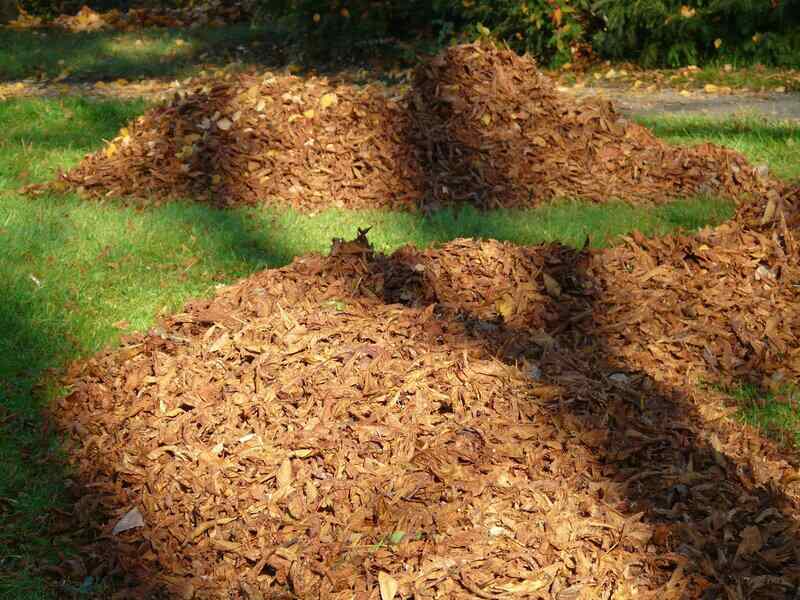
Although they add texture and color to your landscaping, river rock and pea gravel can destroy property during a hurricane or tropical storm. The stones can cause significant damage to cars, houses, and windows as strong winds whip them around your yard.
Mulch is beneficial to your plants because it maintains moisture, prevents erosion, and, if made from organic materials, even helps to improve the soil with nutrients. Soft mulch like shredded leaves, bark, and pine needles won’t cause damage in high winds like hard rocks.
Cost of soft mulches: Mulch costs are affected by the type of mulch you use. With an average cost of $28 per cubic yard, pine bark is the most cost-effective type of mulch you can buy. But in Marion County, you can get it delivered for free!
11. Secure Your Hardscapes
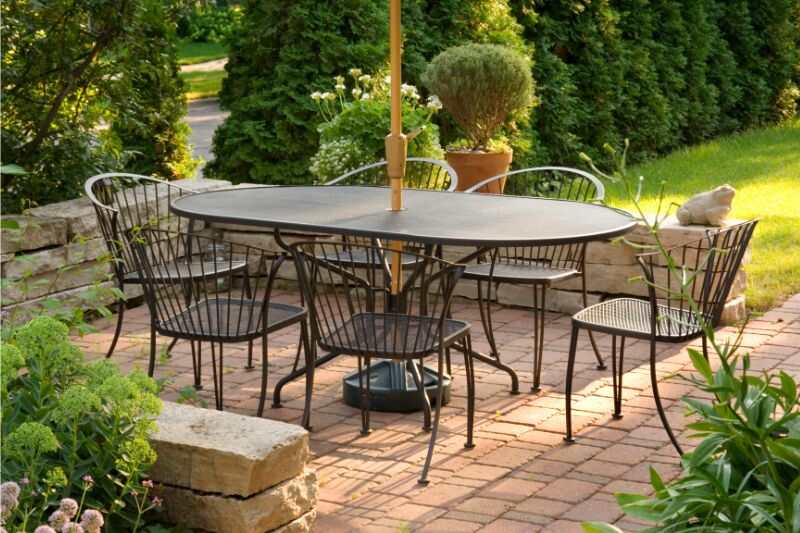
A “hardscape” is everything on your property that is not a plant. Storms can readily damage hardscapes such as arbors, paving stones, and patios. Strong winds have the potential to turn these features into devastating projectiles.
In a hurricane, the main risk for a hardscape is that it will blow around and damage your home or property. To safeguard your property during a Floridian storm, take the following precautions:
- Think heavy: Hardscapes made of stone or metal are less likely to blow away in high winds.
- Lock it down: Hardscapes should be concrete-anchored into the ground to improve wind resistance. A wooden deck is less likely to blow away when anchored.
Cost to secure hardscapes: No matter what kind of landscape improvement you want, it is reasonable to expect stone or metal to cost more than wood or vinyl. A bag of concrete mix costs between $5.29 to $11.50 at the hardware store if you want to anchor your hardscapes yourself.
Be Prepared for Tropical Storms and Hurricanes
There is no hurricane-proof landscape or home. A severe storm can topple even the most wind-resistant trees. No matter how often you trim the branches, they are still vulnerable to breaking. Hurricanes are unstoppable, but you can take steps to prepare yourself and your family. Preparation is crucial, and the earlier you begin, the better.
- Have an evacuation plan: Create an evacuation plan with your family far in advance of when a hurricane is expected.
- Prepare for medical conditions: When creating a disaster plan, remember the medical needs of friends and family. Even if they do not live with you, you can still help them prepare for an evacuation.
- Don’t forget your pets. Consider your pets in disaster planning to protect them from harm or loss. Dogs, cats, small pets, and livestock need an exit strategy.
- Prep your emergency supplies: You’ll need to stock up on emergency supplies for your family if you decide to stay home during a hurricane. It’s hard to predict when your electricity will go out or when you can go grocery shopping safely.
- Make a “go bag”: Your travel bag has the same supplies as your at-home kit, plus a few extras. Prepare your “go bags” in advance to be ready at any time.
- Avoid Carbon Monoxide (CO) poisoning: Carbon monoxide poisoning can occur when CO-containing fumes congregate in a confined space, but it is avoidable. Never use a camp stove or generator inside, and never leave your car running in a closed garage.
- Get your roof inspected: Heavy rain from a tropical storm can cause your roof to leak, and strong gusts might pull your shingles off. You may avoid dealing with these issues during extreme weather by having your roof checked regularly.
After a hurricane, mountains of material and destruction are left behind, and you’re left with a big mess to clean-up. Check out How to Clean Up Your Yard After a Hurricane for storm cleanup tips. Alternatively, if you don’t own the equipment necessary to do storm cleanup yourself, contact a local landscaping service to clear the debris and restore your landscaping.
FAQ About Hurricane-Resistant Landscaping
No. In most cases, renters and homeowners insurance will not cover flood damage due to weather-related incidences.
Prepare in advance! If you plan to stay put, have food, water, and proper shelter for your pets. If you evacuate, make a “go bag” for Max and Tigger, too.
If you evacuate to the home of family members or friends, ensure they’ll be able to accommodate both you and your pets if you need to evacuate. Emergency shelters don’t accommodate pets, so plan ahead.
Make hurricane relief a year-round activity. Here are things you can do:
● Donate blood.
● Take a first aid class.
● Get certified in CPR.
● Donate regularly to hurricane and disaster relief organizations.
When to Call in the Landscaping Pros
Despite your best efforts, Mother Nature can destroy even the most carefully planned lawn. However, hurricane-resistant landscaping will reduce the risk of severe damage to your home and yard.
To help you in designing and creating your hurricane-resistant landscape, think about hiring an Ocala landscaping pro. In addition to being skilled at building more challenging tasks like retaining walls, experienced landscapers are knowledgeable about the best plants for your unique lawn.
Sources
Main Image Credit: State Farm / Flickr / CC BY 2.0